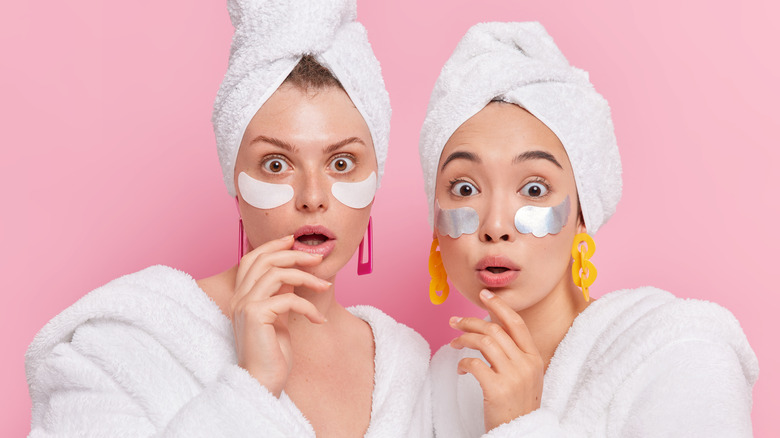The One Thing You Should Be Doing After A Shower For Vaginal Health
Is there anything better than stepping out of a steamy shower, wrapping yourself in a soft, clean towel, and lounging around for a while before getting ready for the day? But alas – most mornings end up looking more like a race out the door, featuring should-be Olympic events like the speed shower, the quick towel-off, and, of course, wiggling into clothes while still sort of damp. Trust us, we get it! But if you aren't careful, option B might end up leaving you with a rather itchy issue that has no regard for your busy schedule.
According to the Office on Women's Health, vaginal yeast infections are a type of fungal infection caused by the overgrowth of the fungus candida. Symptoms of a yeast infection can include burning, itching, and thick, white discharge. While it sounds like an unusual nightmare (and can feel like one too), 75% of women will get a yeast infection at some point in their lives. Vaginal yeast infections are easily treated with over-the-counter or prescription antifungals, but we know you'd rather not have to deal with one in the first place. So, we're going to fill you in on the one thing you should be doing post-shower to keep yourself at peak performance.
Dry off thoroughly after a shower
When you're in a rush after a shower, toweling off can seem like a somewhat tedious task. But if you're slipping into your knickers before you're totally dry down there, you might be putting yourself at risk for a yeast infection. When speaking with Glamour, Dr. Jason James, medical director at Miami's FemCare Ob-Gyn, reminds us that yeast thrives in moist environments. This is why yeast infections are more common in the summer when we're more likely to have sweat build up near the genitals, or we hang by the pool all day in a damp swimsuit.
According to a 2020 study published in Microbial Cell, candida naturally occurs in the vaginal area. It will typically live there, under the radar, thanks to lactobacillus – good bacteria that act as candida's competitor in a vaginal environment. However, if an imbalance occurs, the good bacteria might lose the battle. This can lead to an overgrowth of yeast that may cause an infection (per Healthline).
James says that warmth, moisture, and friction can create changes in the vagina's pH that open the door for yeast to grow out of control. Ensuring that you dry off properly significantly improves your chances of preventing infection. For women on the go, he recommends doing your hair or makeup while still naked to allow time for proper air-drying. Alternatively, if you're wearing a skirt or dress, you can put on your panties just before walking out the door.
Other ways to help prevent yeast infections
Making sure you're totally dry before getting dressed isn't the only thing you can do to keep your vaginal area free of excess moisture. The Office on Women's Health suggests changing out of wet swimsuits or workout clothes as quickly as possible. They also suggest sticking to cotton underwear, as cotton doesn't hold heat and moisture the way other fabrics can. Steering clear of tight or too small underwear, pantyhose, pants, or jeans can also help to keep the area cool and dry. To further prevent yeast infections, douching, as well as scented feminine products, bubble baths, and sprays should all be avoided. Those with diabetes are encouraged to keep their blood sugar under control.
If you think you might have a yeast infection, talk to your doctor about your symptoms before reaching for over-the-counter medications. They can help you make sure you're getting the correct treatment for your condition.



